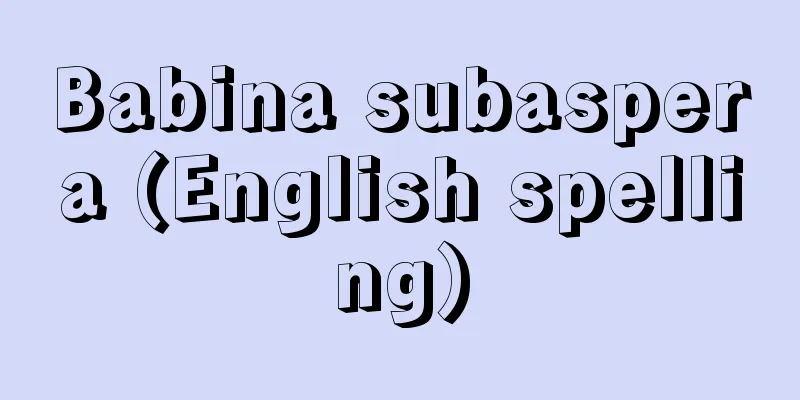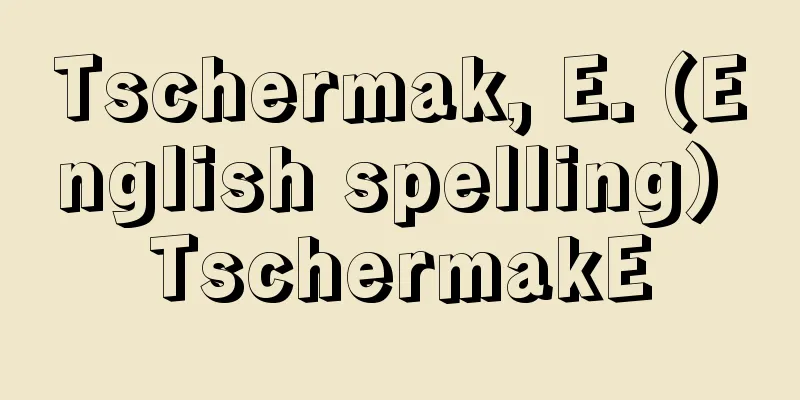Phrase - く

|
[1] (noun) ① A meaningful section of words that form a unit in a sentence. Also, a sequence of words. ※Kojiki (712) Preface: “In ancient times, words and meanings were aligned and simple , and it was difficult to lay out sentences and construct phrases.” ※Poppy (1907) by Natsume Soseki, 19: “Mr. Kono ended the phrase . His mother looked down and did not reply.” [Bunshin Choryu – Chapters and Verses] ② A unit of poetry. (a) In Chinese poetry, a section of four, five, or seven characters in a row. ※Utsubo (c. 970-999) Festival Envoy: “The voices of the many people walking around are interesting, and I will not join in.” [Poetry – General Discussion] (b) In waka poetry, a section of five, seven, or more syllables in terms of rhythm. ※Kokin (905-914) Jikko Tabi, 410, inscription: "The usual verse called kakitsubata is placed at the beginning of the poem." ※Yakumo Gosho (around 1242), 1: "Sentouka. A verse added to 31 characters. A poem usually has five verses, but this one has six." (Ha) In tanka and renga, a section of a poem that is put together with a combination of syllables such as 5-7-5 or 7-7. This includes the upper verse, lower verse, previous verse, and attached verse. ※Renri Hisho (1349) "When a verse that does not seem to match the previous verse comes to mind." ③ Haiku. Refers to the opening verse of a renga. ※Haikai, Ogi Nikki (1695), 1: "There are no seasonal words. It would be wrong to call it a miscellaneous verse." ④ Refers to a proverb or idiomatic phrase. [Nippo Jisho (1603-04)] ⑤ Words to preach or explain. Matter to explain. ※Sharebon Yufuri Kaidan (1780) "There is a big phrase for the money he bought." ⑥ One of the linguistic units. (i) A set of words expressing a whole thought. The smallest unit of linguistic expression of a thought. Some theories consider it to have a subject and a predicate, and that it is part of a sentence. ※Wa-Ei Rin-Shusei (1st edition) (1867) "Ikku (Ikku) (translation) One sentence" (ii) Two or more words are followed, and function the same as a noun, verb, or other word. [Nihon Slang Grammar (1901)] (iii) A set of an independent word accompanied by a particle or auxiliary verb. A phrase. ⑦ In Heike, a chapter in which the story is told. ⑧ Each single sound is called a sentence , the name of the thing that is made up of consecutive sentences is called a name , and a phrase that expresses a unified meaning is called a verse. For example, "The flowers are crimson ." Also, the teaching of the meaning is called a verse, and the principle of the meaning is called a meaning. Together, they are called the meaning of a verse. [Kusharon-5] [Kongo-senron-1] [2] [Suffix] ① Used to count the verses of linked verses and haiku. ※Yakumo Gosho (around 1242) 1 "Within three verses, it is difficult to eliminate . Even with four or five verses, the same thing can be done . " ※Haikai Kyoraisho (1702-04) A comment from the master, "Only this one verse said, 'The grass has grown tall.'" ② Used to count the chapters and sections of a Heikyoku. *Kanmon Goki - June 8, 1416, "Tsubaki Ichisunsen. At that time, there were two famous Boichi masters. Norio Nidoba Ichiheike Sankushin." Source: The Selected Edition of the Japanese Language Dictionary About the Selected Edition of the Japanese Language Dictionary Information |
|
[1] 〘名〙① 文章の中でひとまとまりをなしている、意味を持つことばのひと区切り。また、ことばのひとつづき。※古事記(712)序「上古の時、言と意と並びに朴(すなほ)にして、文を敷き句を構ふること、字に即ち難し」※虞美人草(1907)〈夏目漱石〉一九「甲野さんは句(ク)を切った。母は下を向いて答へない」 〔文心雕龍‐章句〕② 詩歌の構成単位。(イ) 漢詩で、四字、五字または七字などをつづけたひとまとまり。※宇津保(970‐999頃)祭の使「ここら興あるくをおもしろき声に、多くの人誦する声にまじらず」 〔詩品‐総論〕(ロ) 和歌で、韻律上、五音節、七音節などで区切られたもの。※古今(905‐914)羇旅・四一〇・詞書「かきつばたといふいつもじをくのかしらにすゑて」※八雲御抄(1242頃)一「旋頭歌。三十一字に今一句を添へたる也。普通歌は五句、是は六句也」(ハ) 短歌、連歌などで、五七五、または、七七などの音節の組み合わせでまとめられるひと区切り。上の句、下の句、前句、付け句の類。※連理秘抄(1349)「いかにも前の句に思ひあはぬ句の出で来る折に」③ 俳句。連句の発句をいう。※俳諧・笈日記(1695)上「季の言葉なし。雑の句といはんもあしからじ」④ 格言、または慣用句をいう。〔日葡辞書(1603‐04)〕⑤ 説いて聞かせることば。説明する事柄。※洒落本・遊婦里会談(1780)「その身うけの金の事にゃア、大ぶ句のある事さ」⑥ 言語単位の一つ。(イ) 単語をつづって、ひとまとまりの思想を表わすもの。思想の言語的表現の最小のまとまり。学説によっては、主語、述語を備えたものとし、また、それが文の部分となっているものとする。※和英語林集成(初版)(1867)「Ikku(イック)〈訳〉一つの文」(ロ) 二個以上の単語が続いて、一個の名詞または動詞、その他の単語と同様の働きをなすもの。〔日本俗語文典(1901)〕(ハ) 一個の自立語に助詞、助動詞を伴ったひとつづき。文節。⑦ 平曲で、その語られる一章段。⑧ 個々の単音を文(もん)、その文が連続して作られた事物の名称を名(みょう)といい、その名が連なってまとまった意を表わす章句を句という。「花は紅(くれない)」の類。また、能詮の教を句といい、所詮の理を義といい、合わせて句義という。〔倶舎論‐五〕〔金剛仙論‐一〕[2] 〘接尾〙① 連歌の各句や俳句などを数えるのに用いる。※八雲御抄(1242頃)一「三句が内は可レ去レ病。四句五句がうちにも、同事は可二用意一」※俳諧・去来抄(1702‐04)先師評「ただ此一句のみ『丈草、出来たり』との給ふ」② 平曲の章段を数えるのに用いる。※看聞御記‐応永二三年(1416)六月八日「椿一撿挍参。当時有二名望一堪能者也。則於二導場一平家三句申」
出典 精選版 日本国語大辞典精選版 日本国語大辞典について 情報 |
Recommend
Donkin, Bryan
Born: March 22, 1768, Northumberland [Died] Februa...
Nerine - Diamond lily
A general term for the genus Nerine, part of the ...
Puṣkarāvatī (English spelling)
… Most of the buildings are only the foundations,...
Protoceratops - Protoceratops (English spelling)
A small four-legged dinosaur discovered in a laye...
Indian mouse deer
An animal of the Mammalia class, Order Artiodacty...
Amijigusa type life cycle - Amijigusa type life cycle
…When the tetraspores germinate, they become game...
Tsuruzawa Seiroku - Tsuruzawa Seiroku
A shamisen played in Gidayu style. [Yoshihiro Kur...
Popular belief
Belief in the existence of superhuman powers and ...
Microclimate - Microclimate
Micrometeorology refers to atmospheric phenomena ...
Extrusion method
…When building a structure, the natural ground ma...
Queensland Nuts
Please see our Macadamia page. Source: Encyclopae...
Kanshuntse [mountain] - Kanshuntse
…In 1980, an American team succeeded in ascending...
Saumur - Saumur (English spelling)
A city in the Maine-et-Loire department in mid-we...
Kikuzuki Production
…During the Bunka and Bunsei eras, even big names...
Flag
A pole or other stick with cloth or paper attache...



![Shiroishi [city] - Shiroishi](/upload/images/67cbe6c887cb8.webp)





